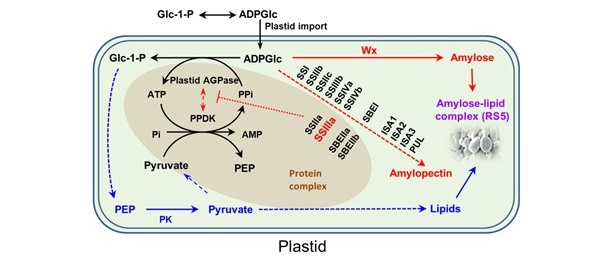Researchers in China have identified a genetic mutation that increases the production of resistant starch in rice. Their results have been published in the Proceedings of the National Academy of Sciences.
Resistant starch refers to starch and starch degradation products that escape from digestion in the small intestine of healthy individuals. Foods high in resistant starch could potentially protect against infection, diarrhea, inflammatory bowel disease and even diabetes, but the global average intake of resistant starch is dramatically lower than the levels recommended for beneficial health. Hot cooked rice, for example, typically contains less than three percent resistant starch.
Improving the amounts and properties of resistant starch is an important goal for rice breeding, but strategies to increase resistant starch production in rice are limited due to a lack of knowledge of its molecular basis.
Now, groups led by Professor Li Jiayang at the Institute of Genetics and Developmental Biology of the Chinese Academy of Sciences and Professor Wu Dianxing at Zhejiang University have used map-based cloning to identify a gene responsible for high resistant starch production.

A proposed RS biosynthetic pathway in the plastid. (Image by IGDB)
When the soluble starch synthase gene (SSIIIa) was mutated, the resulting rice had a modified starch granule structure, high amylose, lipid and amylose-lipid complexes. In-depth studies showed that resistant starch production is dependent on the high-expression of the Waxya allele.
Based on these findings and previously published results, researchers proposed that the loss of function of SSIIIa disrupts the formation of a protein complex containing the enzymes PPDK and AGPase, thereby increasing the levels of lipids. At the same time, the lack of SSIIIa increases the level of non-resistant starch (amylose). The higher levels of lipids and amylose in turn give rise to an increased formation of amylose-lipid complexes characteristic of resistant starch.
The discovery not only provides a promising approach to develop new rice lines rich in resistant starch but also sheds light on resistant starch biosynthesis in other major cereal crops, the authors said. (Asian Scientist)

